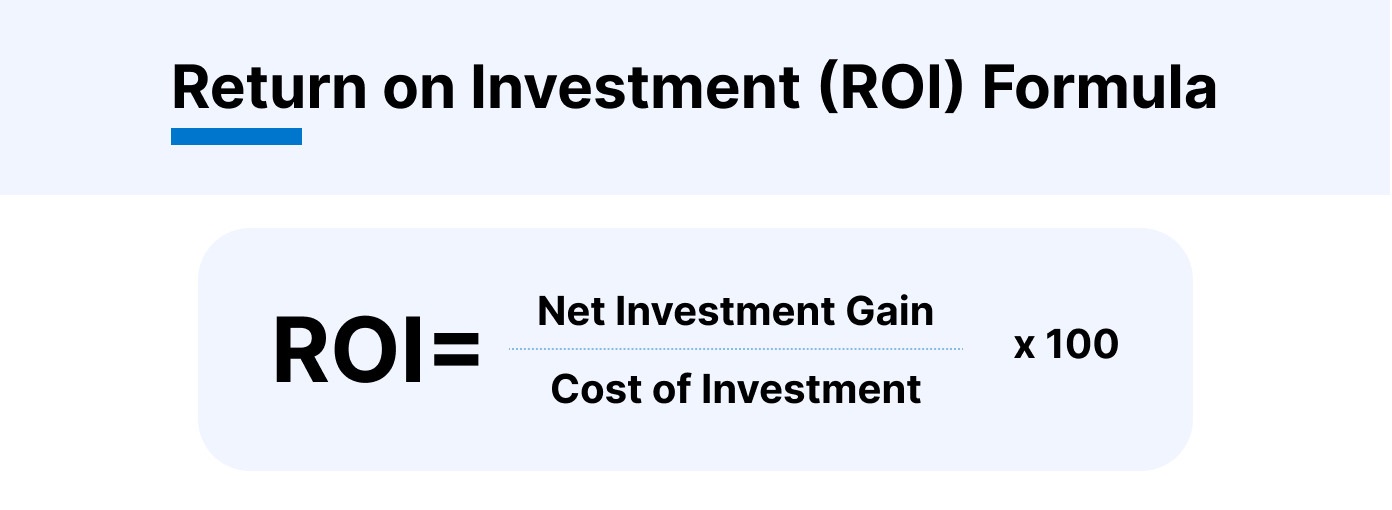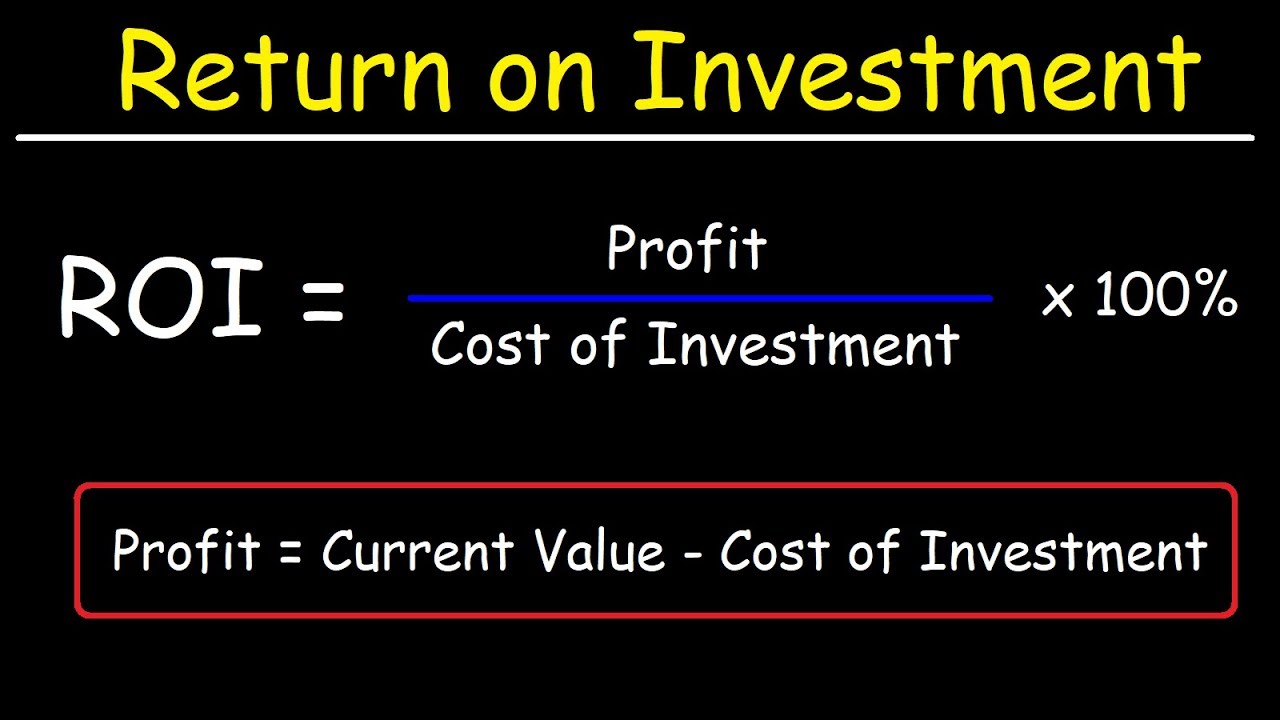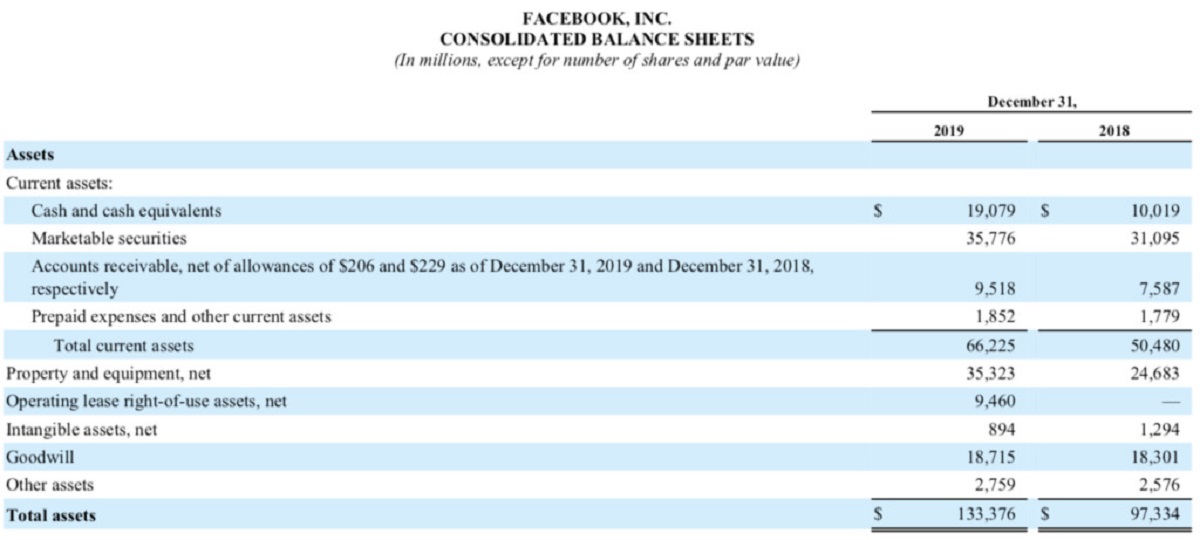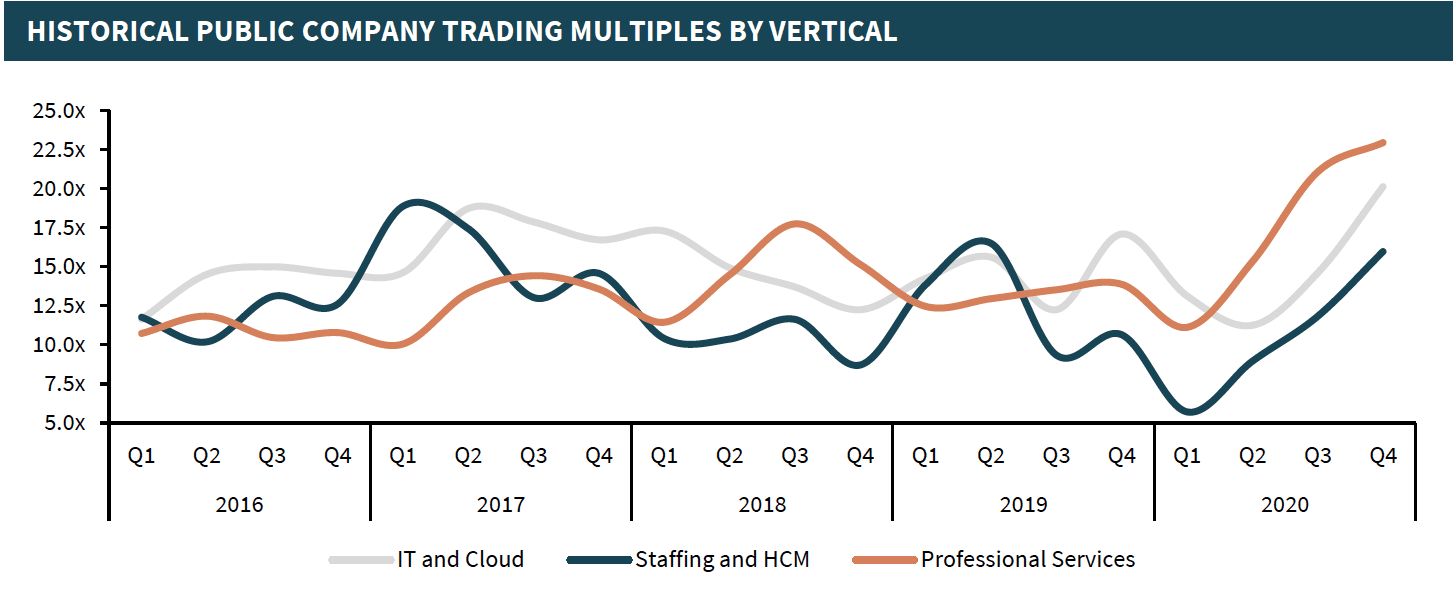Introduction
Welcome to the world of generating cash flow from investments! Whether you’re looking to supplement your income, build a nest egg for retirement, or achieve financial freedom, understanding how to generate cash flow from your investments is essential. Cash flow refers to the income generated from your investments, which can be in the form of rental payments, dividends, or interest.
The key to success in generating cash flow is to have a clear understanding of your financial goals. What are you looking to achieve with your investments? Are you seeking a steady stream of passive income? Or are you aiming for long-term capital appreciation? Defining your goals will help guide your investment decisions and strategies.
Once you have a clear idea of your financial goals, it’s time to analyze the various investment options available to you. Real estate, stocks, bonds, and other investment vehicles each have their own unique characteristics, risks, and potential for cash flow.
One popular avenue for generating cash flow is through real estate investments. Purchasing rental properties can provide a steady stream of rental income, especially in high-demand areas. Additionally, real estate offers the potential for long-term appreciation, allowing you to build equity over time.
Another option to consider is investing in stocks and bonds. Dividend-paying stocks can provide a regular source of cash flow, with some companies even increasing their dividend payments over time. Bonds, on the other hand, offer fixed interest payments, providing a predictable income stream.
Building a diverse investment portfolio is crucial for spreading risk and maximizing cash flow potential. By investing in a mix of asset classes and sectors, you can mitigate the impact of market fluctuations on your overall cash flow. Diversification can also provide opportunities for higher returns through a balanced investment approach.
Of course, investing always comes with risks. It’s important to understand and manage these risks effectively. This involves thorough research, due diligence, and staying updated on market trends. Additionally, considering factors such as inflation, interest rates, and the overall economic climate can help you make informed investment decisions.
Lastly, monitoring and adjusting your investments is a continuous process. Regularly reviewing your portfolio’s performance, reevaluating your financial goals, and making necessary adjustments is vital for maintaining a healthy cash flow stream. Staying proactive and adaptable will enable you to optimize your investments for maximum cash flow potential.
In this guide, we will delve deeper into each of these topics, providing you with actionable insights to help you generate cash flow from your investments. So, let’s begin our journey towards financial success!
Understanding Cash Flow
Before diving into the world of generating cash flow from investments, it’s important to have a solid understanding of what cash flow actually means. Cash flow refers to the movement of money into and out of your investment portfolio.
Positive cash flow occurs when the income generated from your investments exceeds the expenses associated with them. This can come in various forms, such as rental income from real estate properties, dividend payments from stocks, or interest earned from bonds. Positive cash flow is essential for financial success as it allows you to cover expenses, reinvest in your portfolio, and ultimately achieve your financial goals.
Negative cash flow, on the other hand, happens when the expenses exceed the income generated by your investments. This can occur when you have high maintenance costs, vacancy periods, or when the market conditions are not favorable. Negative cash flow can put a strain on your finances and hinder your investment growth. Therefore, it’s crucial to carefully analyze the potential cash flow of any investment before committing your hard-earned money.
When evaluating the cash flow potential of an investment, it’s important to consider both short-term and long-term factors. Short-term factors include the immediate cash flow generated by an investment, such as rental income or dividend payments. Long-term factors, on the other hand, focus on the potential for appreciation or capital gains, which can boost cash flow over time.
Calculating and monitoring cash flow is critical to understanding the financial health of your investments. By meticulously tracking income and expenses, you can identify areas where you can increase revenue or reduce costs. Tools like cash flow statements or spreadsheets can help you keep a detailed record of all your investment activities.
Additionally, it’s essential to differentiate between operating cash flow and reinvestment cash flow. Operating cash flow refers to the income generated by your investments that is available for personal use or for covering expenses. Reinvestment cash flow, on the other hand, is the income that is reinvested back into your portfolio to purchase additional investments or to expand existing ones.
Understanding cash flow is the foundational step to successfully generating income from your investments. It allows you to make informed decisions, manage your finances effectively, and maximize the returns from your investment portfolio. In the upcoming sections, we will explore various investment options and strategies to help you generate consistent cash flow and achieve your financial goals.
Setting Financial Goals
Setting clear financial goals is the first step towards generating cash flow from your investments. It provides you with direction, motivation, and a benchmark to measure your progress. Whether you’re aiming to supplement your income, save for a specific milestone, or achieve financial independence, having well-defined goals will guide your investment decisions and strategies.
When setting financial goals, it’s important to make them SMART – specific, measurable, achievable, realistic, and time-bound. For example, instead of a vague goal like “make more money,” a SMART goal would be “generate an extra $500 per month from my investments within the next 12 months.” This specific and measurable goal allows you to track your progress and determine whether it’s achievable and within a realistic timeline.
It’s also crucial to align your financial goals with your personal values and priorities. What do you want to accomplish with the money you generate from your investments? Do you want to travel the world, support your family, or save for retirement? Understanding your motivations will help you stay focused and committed to achieving your financial goals.
Additionally, consider your risk tolerance when setting financial goals. Are you comfortable with taking higher risks for potentially higher returns, or do you prefer a more conservative approach? Knowing your risk tolerance will enable you to choose investment options that align with your comfort level and minimize stress and anxiety along the way.
Furthermore, it’s important to break down your financial goals into smaller milestones. Setting short-term, medium-term, and long-term targets allows you to track progress and celebrate achievements along the way. For example, if your long-term goal is to generate $5,000 per month in cash flow, set monthly, quarterly, or yearly targets to keep yourself motivated and on track.
Regularly reassessing and adjusting your financial goals is also essential. As your circumstances change, your goals may need to be modified or revised. Life events, market conditions, and personal priorities can all influence your goals, and it’s important to stay adaptable and make adjustments accordingly.
Once you have clear and defined financial goals, you can begin to map out the strategies and investment options that will help you achieve them. In the upcoming sections, we will explore different investment avenues and techniques to generate cash flow and grow your wealth. Remember, setting realistic and meaningful financial goals is the foundation for long-term success in generating cash flow from your investments.
Analyzing Investment Options
When it comes to generating cash flow from investments, there are various options to consider. Each investment avenue comes with its own risks, rewards, and potential for cash flow. It’s important to analyze and understand these options before making any investment decisions.
One common investment option for generating cash flow is real estate. Real estate investments can provide a steady stream of rental income, making it an attractive choice for passive cash flow. Whether it’s residential properties, commercial buildings, or even vacation rentals, real estate offers the potential for both short-term and long-term returns. However, it’s crucial to carefully evaluate factors such as location, market demand, and potential maintenance costs before investing in real estate.
Another option to consider is investing in stocks and bonds. Stocks represent ownership in a company and can provide cash flow through dividend payments. Dividend-paying stocks can be an excellent source of regular income, especially if the company has a history of increasing dividends over time. Bonds, on the other hand, pay interest to investors and can be a relatively stable source of cash flow. Analyzing the financial health of companies and evaluating their dividend history or bond ratings are important factors when considering stock and bond investments.
For more hands-off investors, investing in mutual funds or exchange-traded funds (ETFs) can be an attractive option. These funds pool money from multiple investors and invest in a diversified portfolio of assets. This diversification helps spread risk and provides the potential for cash flow from various sources, such as dividends, interest, or capital gains.
Additionally, peer-to-peer lending platforms have gained popularity as an alternative investment option. These platforms connect borrowers with lenders, allowing investors to earn cash flow through interest payments. However, it’s important to assess the creditworthiness of borrowers and understand the risks involved before participating in peer-to-peer lending.
Analyzing investment options also involves considering factors such as liquidity, capital requirements, and market trends. Some investments offer greater liquidity, allowing you to access your cash flow more readily, while others may require a longer investment horizon. Understanding the capital requirements and potential risks associated with each investment option is crucial for making informed choices.
Furthermore, staying updated on market trends and economic conditions is essential for analyzing investment options. Monitoring factors such as interest rates, inflation, and industry trends can help you identify opportunities and potential risks in different investment sectors.
Remember, analyzing investment options is a crucial step in generating cash flow from your investments. Carefully evaluating the risks and rewards, understanding market trends, and aligning them with your financial goals will help you make informed investment decisions. In the following sections, we will delve deeper into specific investment strategies and explore ways to generate consistent cash flow.
Generating Passive Income through Real Estate
Real estate investments have long been considered a reliable and lucrative avenue for generating passive income. By investing in rental properties, you can build a steady cash flow stream that requires minimal effort once the initial setup is complete.
One of the primary benefits of investing in real estate is the ability to earn rental income. By purchasing properties and renting them out to tenants, you can generate a consistent and reliable cash flow. The key is to carefully choose properties in high-demand areas with favorable rental markets. Conducting thorough market research and analyzing rental rates in the area will help you determine the income potential of a property.
When investing in real estate for cash flow, it’s important to consider factors such as property management costs, maintenance expenses, and vacancy rates. Properly accounting for these costs will ensure that your rental income covers the necessary expenses and still leaves room for profit. Additionally, having a contingency fund for unforeseen expenses is crucial for maintaining a healthy cash flow stream.
Another popular strategy for generating passive income through real estate is investing in real estate investment trusts (REITs). REITs are companies that own, operate, or finance income-generating real estate. By investing in REITs, you can gain exposure to a diverse real estate portfolio without the need to manage properties directly. REITs typically distribute a significant portion of their income to shareholders in the form of dividends, providing a steady cash flow stream.
Real estate crowdfunding is another innovative approach to earning passive income from real estate. Crowdfunding platforms allow individuals to invest in real estate projects collectively. By pooling resources with other investors, you can access investment opportunities that were previously reserved for institutional investors. Real estate crowdfunding provides an avenue for diversification and allows investors to earn cash flow through rental income or profit-sharing agreements.
Location plays a crucial role in generating cash flow through real estate. Investing in properties in desirable areas with strong rental demand and potential for appreciation can maximize your cash flow potential. Factors such as proximity to amenities, transportation, and job opportunities can significantly impact rental income and property values.
Furthermore, embracing technology can streamline the management of rental properties and enhance cash flow. Utilizing property management software, online rental platforms, and digital marketing can attract tenants, streamline rent collection and property maintenance, and improve overall efficiency.
Generating passive income through real estate requires careful research, smart decision-making, and ongoing management. However, by investing in properties or real estate investment vehicles, you can enjoy the benefits of regular monthly rental income and the potential for long-term equity growth. Real estate is a tangible asset that provides not only cash flow but also the security of a physical investment.
In the next sections, we will explore other investment avenues and strategies to help you generate cash flow and build a diverse investment portfolio.
Investing in Stocks and Bonds for Cash Flow
Investing in stocks and bonds is another popular way to generate cash flow from your investments. Stocks represent ownership in a company, while bonds are debt instruments issued by entities such as corporations or governments. Both options can provide regular income in the form of dividends or interest payments.
Dividend-paying stocks are a common choice for investors seeking cash flow. When you invest in stocks of companies that distribute a portion of their earnings to shareholders, you can receive regular dividend payments. Some companies even have a history of increasing their dividends over time, making them attractive options for generating consistent cash flow. It’s important to research companies, evaluate their financial health, and assess their dividend track record before investing in dividend stocks.
Bonds, on the other hand, offer fixed interest payments to investors. When you purchase bonds, you are essentially lending money to the issuer in exchange for regular interest payments. Bonds come in various forms such as government bonds, corporate bonds, and municipal bonds, each with its own level of risk and reward. Analyzing the creditworthiness of the bond issuer and understanding the bond’s terms and conditions are crucial when investing in bonds for cash flow.
Reinvesting the cash flow earned from stocks and bonds can further enhance your investment returns. By utilizing dividend reinvestment programs (DRIPs) for stocks or reinvesting interest payments into additional bonds, you can potentially grow your investment over time. Reinvesting allows you to compound your cash flow and potentially accelerate your wealth accumulation.
When investing in stocks and bonds for cash flow, diversification is key. Spreading your investments across different companies, industries, and asset classes helps to mitigate risk and enhance the potential for stable cash flow. Creating a well-rounded portfolio that includes a mix of dividend-paying stocks and bonds with varying maturities and risk profiles can help balance income generation and risk management.
Regular monitoring and evaluation of your stock and bond investments is essential. Staying updated on market trends, economic conditions, and company performance allows you to make informed decisions regarding your portfolio. This includes conducting periodic reviews of your holdings, assessing dividend policies, and staying aware of any changes in the bond market that may impact your cash flow.
It’s important to note that investing in stocks and bonds comes with risks, including the potential for market volatility and fluctuations in interest rates. Therefore, it’s crucial to conduct thorough research, seek professional advice if needed, and ensure that your investment decisions align with your risk tolerance and financial goals.
Investing in stocks and bonds can provide a reliable source of cash flow while offering the potential for capital appreciation over time. By carefully selecting dividend-paying stocks and bonds, diversifying your portfolio, and monitoring your investments, you can generate consistent income from your stock and bond holdings.
In the following sections, we will continue to explore other investment options and strategies to help you create a diverse portfolio and maximize your cash flow potential.
Building a Diverse Investment Portfolio
Building a diverse investment portfolio is crucial for maximizing cash flow potential while managing risk effectively. By spreading your investments across different asset classes, industries, and geographical regions, you can minimize the impact of market volatility and create a balanced approach to generating cash flow.
One of the fundamental principles of diversification is to invest in different asset classes. This includes stocks, bonds, real estate, commodities, and even alternative investments like cryptocurrencies or precious metals. Each asset class behaves differently in response to market conditions, providing an opportunity for cash flow generation and risk management. Allocating your investments across various asset classes allows you to capture growth potential and income streams from different sources.
Within each asset class, diversification can be achieved by investing in different companies, sectors, or geographic regions. For stocks, this can involve spreading your investments across companies of varying sizes, industries, and regions. Similarly, in bonds, diversification can be achieved through investing in bonds issued by different entities, such as governments, corporations, or municipalities. This helps protect against the risk of company-specific or region-specific events impacting your overall cash flow.
Another aspect of portfolio diversification is considering both domestic and international investments. Investing in companies or assets outside of your home country provides exposure to different economic conditions, political environments, and currency fluctuations. This diversification can help mitigate risk by reducing dependence on a single market or country and tap into potential cash flow opportunities in global markets.
Furthermore, diversification can extend to investment strategies and time horizons. Alongside cash flow-focused investments, consider including growth-oriented investments that may not generate immediate cash flow but have the potential for long-term appreciation. This balance allows you to generate cash flow while participating in the growth of certain investments over time.
Building a diverse investment portfolio also involves assessing risk tolerance and adjusting asset allocation accordingly. More risk-averse investors may allocate a larger portion of their portfolio to lower-risk assets like bonds, while those comfortable with higher volatility may have a higher allocation towards stocks or other high-risk/high-reward investments. Regularly rebalancing your portfolio ensures that it aligns with your risk appetite and keeps your cash flow streams optimized.
Lastly, periodically reviewing and reassessing your investment portfolio is crucial for maintaining diversification. Market conditions, industry trends, and personal financial goals can change over time. Regularly evaluating your holdings, eliminating underperforming assets, and exploring new investment opportunities will help ensure that your portfolio remains diverse and aligned with your cash flow objectives.
Building a diverse investment portfolio allows you to capture cash flow opportunities while mitigating risk. By investing in a mix of asset classes, industries, and geographical regions, you can create a resilient portfolio that generates consistent cash flow and balances long-term growth potential. In the upcoming sections, we will continue to explore additional strategies and techniques to help you optimize your investment portfolio and maximize your cash flow.
Managing Risks in Cash Flow Investments
Managing risks is a crucial aspect of successful cash flow investing. While investments have the potential for generating income, they also come with inherent risks that need to be addressed and managed effectively. By understanding and mitigating these risks, you can safeguard your cash flow and protect your investment portfolio.
One key risk in cash flow investments is market volatility. Market fluctuations can impact the value of your investments, affecting the cash flow generated. By diversifying your investment portfolio across different asset classes and sectors, you can spread the risk and reduce the impact of individual market movements. Regularly reviewing and rebalancing your portfolio will help ensure that it remains aligned with your risk tolerance and financial goals.
Another risk in cash flow investments is inflation. Inflation erodes the purchasing power of money over time, reducing the value of your cash flow streams. It’s important to consider investments that provide protection against inflation, such as real estate properties that can appreciate in value or dividend-paying stocks that have the potential for income growth. Additionally, considering inflation-adjusted investment options like Treasury Inflation-Protected Securities (TIPS) can help combat the effects of inflation on your cash flow.
Investment-specific risks need to be assessed as well. For example, in real estate investments, factors such as property vacancy rates, maintenance costs, and property market fluctuations can impact cash flow. Conducting thorough due diligence, assessing rental demand, and maintaining a contingency fund for unexpected expenses can help mitigate these risks. Similarly, in stocks and bonds, understanding the financial health of companies or issuers, monitoring market conditions, and staying up-to-date with relevant news and events can help manage investment-related risks.
Liquidity risk is another aspect to consider. Some investments may have limited liquidity, meaning that it may be challenging to convert them into cash quickly. While illiquid investments can provide attractive cash flow opportunities, it’s essential to have sufficient liquid reserves for emergencies or unforeseen circumstances. Carefully evaluate the liquidity of your investments and ensure that you have a well-structured emergency fund to handle unexpected expenses without disrupting your cash flow streams.
Keeping up with regulatory changes and tax implications is crucial for managing risk in cash flow investments. Stay informed about any changes in laws or regulations that may impact your investments. Understand the tax implications of the cash flow generated from your investments, including any deductions or credits that may be available to you. Seeking professional advice from tax experts or financial advisors can help you navigate through complex tax regulations and optimize your investment strategies.
A proactive approach to risk management is essential for maintaining a healthy cash flow portfolio. Regularly monitor and review your investments, stay informed about market trends and economic indicators, and make adjustments when necessary. Additionally, regularly assessing your risk tolerance and adjusting your portfolio’s asset allocation can help ensure that your investments align with your financial goals and comfort level.
Managing risks in cash flow investments is a continuous process. By diversifying your portfolio, considering inflation protection, conducting thorough due diligence, ensuring adequate liquidity, and staying informed about regulatory and tax matters, you can mitigate risks and create a solid foundation for generating consistent cash flow.
In the following sections, we will explore strategies for monitoring and adjusting your investments to maintain optimal cash flow streams.
Monitoring and Adjusting Your Investments
Monitoring and adjusting your investments is crucial for maintaining the health and optimization of your cash flow streams. As market conditions, economic factors, and personal financial goals change over time, it’s important to regularly review your portfolio and make necessary adjustments to ensure that your investments continue to align with your objectives.
One key aspect of monitoring your investments is keeping track of their performance. Reviewing the performance of individual investments, as well as the overall portfolio, allows you to assess whether they are meeting your expectations and generating the desired cash flow. Utilizing tools like investment tracking software or working with a financial advisor can help simplify this process and provide you with insights into the performance of your investments.
Regularly reviewing your investment portfolio also enables you to identify any underperforming assets or sectors that may be impacting your cash flow. If certain investments consistently fail to meet your desired income objectives, it may be necessary to reevaluate their place within your portfolio. Consider whether adjustments such as selling, reallocation, or replacing underperforming assets can help improve your overall cash flow.
Additionally, staying informed about market trends, economic indicators, and industry analyses is essential for making informed decisions. Business and financial news, as well as expert opinions, can provide valuable insights into emerging opportunities or potential risks that may impact your investments. By staying informed and aware of these factors, you can make timely adjustments to your portfolio to optimize your cash flow potential.
Rebalancing your portfolio is another key aspect of adjusting your investments. Rebalancing involves periodically reassessing your asset allocation and making necessary adjustments to maintain your desired risk-return profile. For example, if a particular asset class or sector has experienced significant growth and now represents a larger portion of your portfolio, you may need to sell some of those investments and reallocate capital to underrepresented areas. Rebalancing ensures that your portfolio remains diversified and aligned with your financial goals.
Furthermore, life events and changes in personal circumstances may necessitate adjustments to your investment strategy. Significant milestones such as getting married, starting a family, or approaching retirement can impact your financial goals and risk appetite. Regularly reassessing your investment objectives and adjusting your portfolio accordingly will help ensure that your investments continue to support your changing needs.
Seeking guidance from a financial advisor can be beneficial when monitoring and adjusting your investments. A professional can provide expert advice, help you navigate complex market conditions, and assist you in making sound investment decisions. Working with a financial advisor can give you peace of mind and confidence in your investment strategy.
Remember, monitoring and adjusting your investments is an ongoing process. Regularly reviewing performance, staying informed about market trends and economic indicators, rebalancing your portfolio, and considering life changes will help you maintain optimal cash flow streams and adapt to evolving market conditions. In the following sections, we will explore additional insights and strategies to enhance your cash flow generation and investment management.
Conclusion
Generating cash flow from investments is an important goal for achieving financial stability and long-term wealth. Throughout this guide, we have explored various strategies and techniques to help you generate consistent income from your investment portfolio.
We started by emphasizing the importance of understanding cash flow and setting clear financial goals. By defining your objectives and aligning them with your personal values and risk tolerance, you can chart a path towards successful cash flow investing.
We then delved into analyzing different investment options, including real estate, stocks, and bonds. Each investment avenue offers unique opportunities for cash flow generation, but it’s crucial to assess their risks, rewards, and suitability to your financial goals.
Building a diverse investment portfolio emerged as a crucial aspect of cash flow investing. Diversification across asset classes, sectors, and geographical regions helps mitigate risk and maximize potential income streams. Regularly monitoring and adjusting your investment portfolio allows you to stay on track, adapt to market conditions, and optimize your cash flow generation.
We explored specific investment options, such as real estate and stock and bond investments, to generate passive income. Additionally, we highlighted the importance of managing risks, staying informed about market trends, and understanding the tax implications related to your investments.
To ensure long-term success in cash flow investing, we emphasized the ongoing process of monitoring and adjusting your investments. Regularly reviewing performance, rebalancing your portfolio, and considering life changes will help you maintain optimal cash flow streams and adapt to evolving market conditions.
Remember, generating cash flow from investments requires patience, dedication, and continuous learning. It’s important to stay informed, seek professional advice when needed, and remain adaptable to market dynamics. By implementing the strategies and techniques discussed in this guide, you can work towards achieving your financial goals and enjoying the benefits of consistent cash flow from your investments.
Good luck on your cash flow journey, and may your investments flourish with success!

























